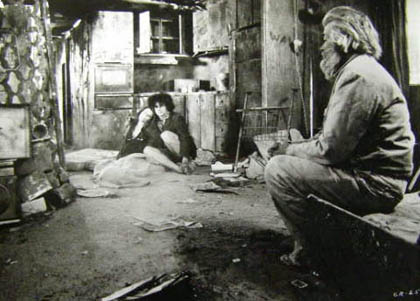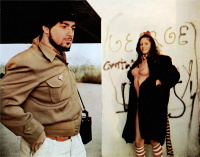This was written for Artforum‘s web site, and appeared there April 3, 2009. — J.R.
A considerable part of what’s most fascinating and enjoyable about Jim McBride’s early films is also what’s most dated and therefore forgotten about them. So it seems pertinent that McBride’s first two films, David Holzman’s Diary (1967) and My Girlfriend’s Wedding (1969), an especially (and provocatively) dialectical twosome, are available on a DVD released in the UK by Second Run (full disclosure: I wrote the liner notes) but can’t be found on their home turf.
The first of these movies virtually launched the American pseudo-documentary long before postmodernist skepticism ungracefully redubbed the form “mockumentary” (and only a couple years after Peter Watkins’s more earnest pseudo-documentaries Culloden [1964] and The War Game [1965], made for the BBC). The title hero (L. M. Kit Carson) — a compulsively diaristic filmmaker who offers his own life for inspection, scaring away his girlfriend in the process — is, like McBride himself, smitten with the textures of the present moment, which ultimately makes him a doomed figure. Some 1960s audiences found him so compellingly believable that they could even accept Holzman, in the final sequence, having lost his Éclair and Nagra, reduced to recording his face and voice in a penny arcade — even though it is left unexplained how these abject substitutes could get conveyed to us on film. By way of contrast, My Girlfriend’s Wedding, a genuine cinéma-vérité documentary with some of the characteristics of fiction, records McBride’s delight in his recently attained English girlfriend, Clarissa Ainley, who contrives to remain in the US by marrying someone else whom she barely knows. And its forty-five-minute sequel, Pictures from Life’s Other Side (1971), funded and then suppressed by the American Film Institute, follows Clarissa (now pregnant), her preadolescent son Joe, Jim, and a pair of dogs on a very countercultural cross-country trip.
Later the same year, McBride returned to fiction by directing a sci-fi script. Written by Lorenzo Mans (a Cuban friend with a memorable scene of his own in David Holzman’s Diary) and polished by novelist Rudy Wurlitzer, Glen and Randa — an absurdist, postapocalyptic parable about a hippie couple trekking west in search of Metropolis — was filmed as if it were an ethnographic study. But this time, McBride’s casting of the title roles with a real couple imported from Hair (Steve Curry and Shelly Plimpton) was so “of the moment” — unlike the remarkable and multidimensional performances of Woody Chambliss and Garry Goodrow as two wizened older characters, who offer relief whenever they appear — that it made any future setting impossible to accept. Similarly, over a decade later, the only era apparent in McBride’s remake of Breathless (1983) isn’t the late ’50s, when Godard’s original was shot, but the early ’80s, and the deliberate inversions (e.g., an American hero and French heroine for Godard’s Belmondo and Seberg) and changes in setting only strand McBride further from his model. (In fact, Glen and Randa comes much closer to being a tribute to Godard, Les Carabiniers [1963] in particular.) For a delightful recapitulation of his countercultural zest and zeitgeist, McBride turns to soft-core porn and returns to the East Coast in Hot Times (1974), enlisting most of his friends in the process.




